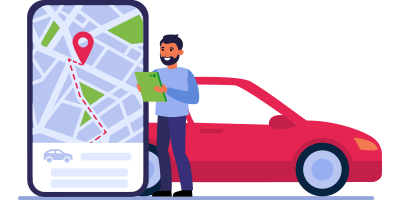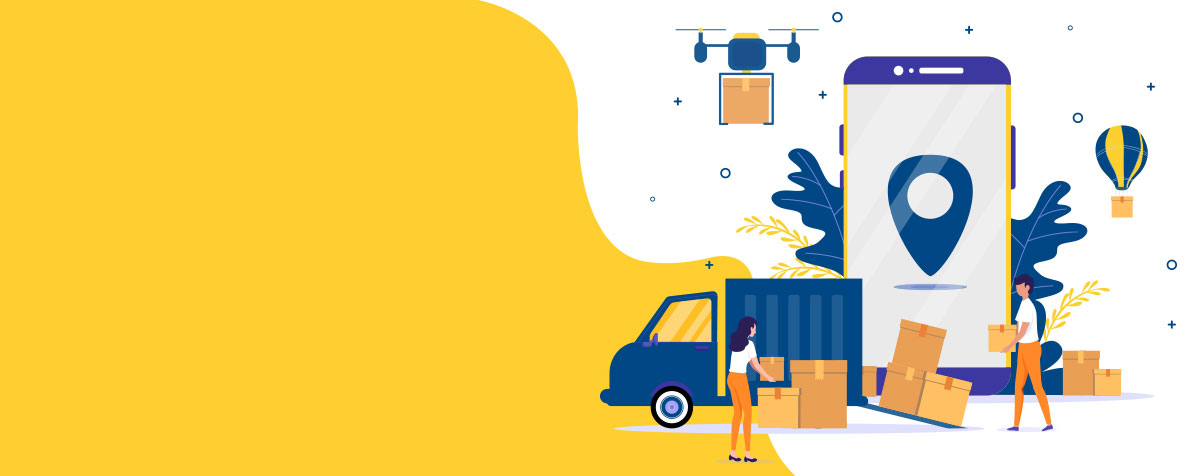The Cost of On-Demand Delivery Apps is Much Less Than You Think!
The impact of Uber on on-demand delivery model has been so much and become so famous that such apps are now called “Uber for X”, where X can stand for anything you can imagine it to be from groceries to maintenance, from healthcare to pharmacies. Simply duplicating the idea in another field is not enough to make customers not accept it and use it.

The home and any-location delivery model of mobile apps, pioneered and popularized world over by Uber, has been catching up with many small and medium businesses. Different businesses, especially in services sector ranging from salon and beauty services, food delivery, maintenance services, package delivery services, and many more are being added to the list almost daily. With the demand for development of such apps booming, the demand for reliable and experienced on-demand app development companies, like Raindrops InfoTech, is also skyrocketing.
On-Demand Service Apps – What are they?
As an established player in the on-demand delivery app development market, Raindrops InfoTech is well suited to serve your needs. Such apps help small and medium businesses compete with behemoths expanding their market footprint and revenues.
But before ordering your own app, you should understand what it is, what it takes to develop them, what are the costs involved and what are the realistic expectations from them? This way you would be able to find and establish the missing link between users’ needs and promises you are going to make using your on-demand delivery mobile app. The on-demand service and delivery apps provide the missing link to provide people who can spend a little more to deliver such services and products at their doorsteps, even from a different city or country.
The Market Potential

There are obviously certain pulls for this kind of services. Some of them are:
- Instant Access and Ordering: A user can order a product or service from anywhere using her mobile app with only a few taps.
- Control and Monitoring: The on-demand apps have tracking based on GPS enabled delivery partner and vendor versions of the app. The user and vendors can monitor the route and time of the delivery partners and even control them.
- Multiple Payments Avenues: Multiple payments options like credit cards, debit cards, the app’s own mobile wallet, other mobile wallets, and net banking are available.
Want to know more about it? Please Contact Us
- Partner and Vendor Review: The users can rate and review delivery partners, service providers and vendors for different parameters and that rating can affect their business keeping them on their toes for on-time and quality services.
- Customer Review: Vendors and service partners can also rate and review their customers on multiple parameters, providing insight into the behaviour of irate customers and troublemakers.
- Avoiding Traffic: People in developed countries like US, Europe, Australia want to spend more time doing what they love and from what they earn, and not on roads for picking up groceries or waiting in line for takeaways.
- Small is Big: Small and local stores, service provider and restaurants know the tastes, needs and constraints of their local markets and not giant multinationals with less exposure, lower budgets for small cities, & lack personal touch.
- Lesser Charges and ETA: Services provided by multinationals such as Amazon like picking and delivering your packages from anywhere to anywhere, run around a hub-and-spoke model making them considerably expensive and taking longer to deliver.
Want to know more about it? Please Contact Us
The App and Its Costs
A proper on-demand services delivery app, as we develop for our clients, need to have following features, based on the above discussion, to make it useful for its users – customers, vendors, and delivery partners.
- Security: As personal data like their addresses, preferences and wallet information, etc are going to reside and transmit over it, this feature is paramount.
- Ease-of-use: The app must have clear and large calls-to-action and minimize the number of taps a user must make to search, order, make payments or track. Make it intuitive and simple.
- Appealing Interface: The UI/UX must be appealing and yet not overload the mobile phone with overly heavy graphics. It should also not put much load on the phone’s battery.
- Multiple Payments Options: User would love as many payments options as possible. This will only make your potential customer base larger.
- Embedded Map Service: Use Google maps to embed the maps and enable tracking services.
- Use Data Analytics and BI: These are used to provide better options, better routes, better offers and providing you insights as to how to improve the services.
The Costs
The costs for development, deployment and maintenance of such an on-demand delivery app or grocery app development depends on what goes into developing it – the number of hours, complexity of UI/UX, Analytics and BI integration, Number of active users expected and so on.
Every app has a robust backend needed to manage the contents on the app and the obvious and apparent the frontend part. The app publisher, or you, would need a control-panel or a dashboard to edit the settings and control every aspect of the app – users, offers, product & services listings, partners, vendors, payments and transactions, etc. Such an app will also require integrations with many third-party services like Google Maps, Payment Gateways, etc.
Want to know more about it? Please Contact Us
Some apps will have multiple frontends as well, like an Uber for passengers, Uber for drivers, and Uber for fleet owners. So, there will be added costs for development and maintenance of those too.
Conclusion
We, at Raindrops InfoTech or anyone worth their salt, cannot provide an exact figure without hearing all your requirements and studying them thoroughly, we can always give a fair range amount that such an app can cost you. This range is depending on certain fair assumptions, based on our experience, regarding the features that such an app would need. You can always get in touch with our market representatives for getting an initial estimate.
Our white label app solutions are a ready-to-go, developed, fully feature rich and tested app package that can be customized for your requirements. These apps packages have modules that are divided into core, featured and optional and all optional modules are independent of each other. Some of the featured modules are dependent on other featured modules, which we can explain to you, and come in bundles.













